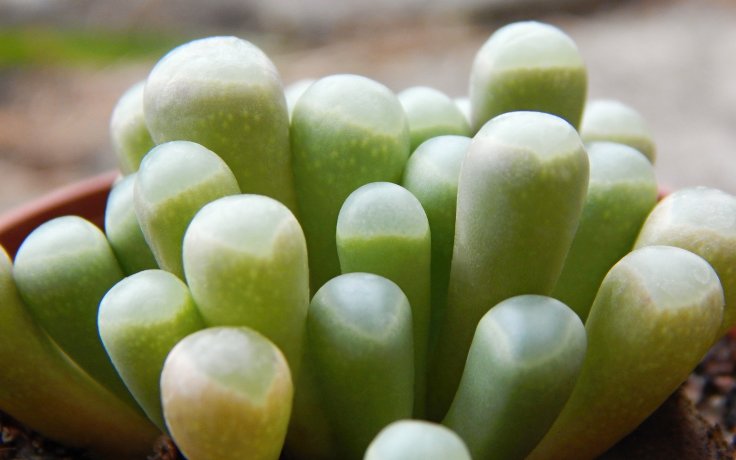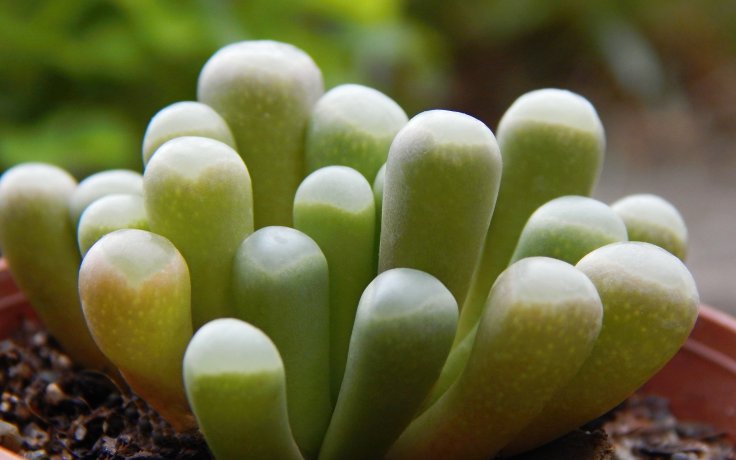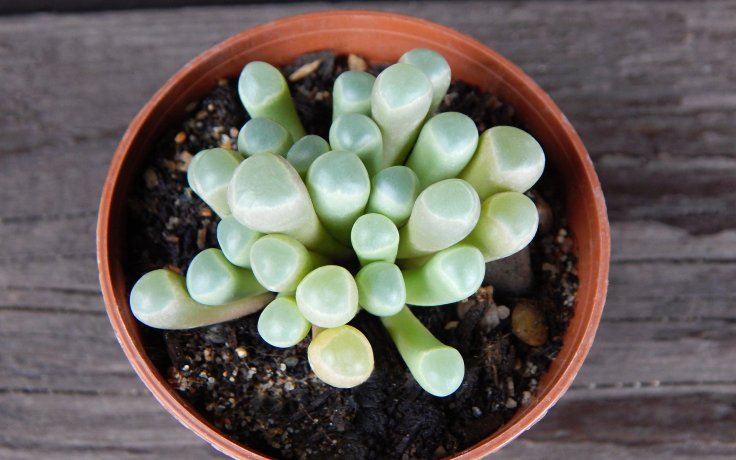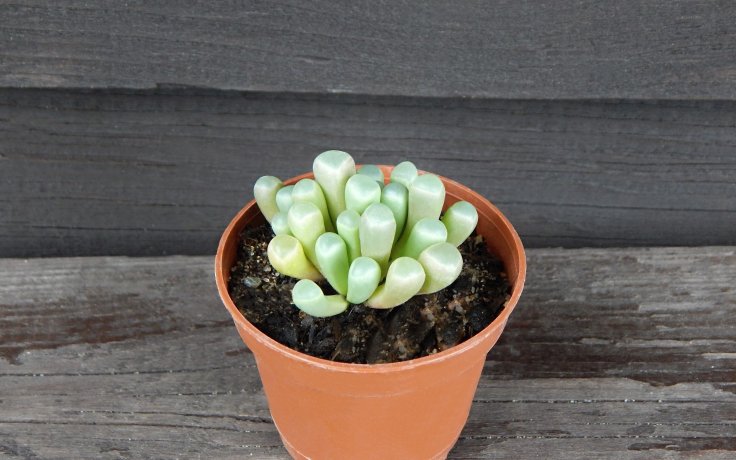- Home
- Succulents
- Fenestraria
- Fenestraria rhopalophylla subsp. aurantiaca





Fenestraria rhopalophylla subsp. aurantiaca
The plant likes a sunny habitat and can tolerate partial shade.
Always water a few days after the substrate has dried out. In winter and summer during the dormant season, limit watering.
It can tolerate -1.1 °C in the short term. However, the plant is not hardy.
I recommend this plant to those who like to explore unusual natural phenomena. The windows on the tops of the leaves let us see inside the plant in fine weather.
Fenestraria rhopalophylla subsp. aurantiaca, also known by the popular names Baby Toes and Window Plant, is an unusual succulent plant that will win you over with its unique appearance. It belongs to the miniature genus Fenestraria, which consists of only two subspecies. It resembles Frithia pulchra and is usually found in sandy or calcareous soils in nature.
It is characterised by its beautiful club-shaped leaves, which are smooth and dark green. These leaves are topped with flats, most of which are windows. These windows, which give the plant its genus name, are used to let light into the leaf. In sunny weather, we can see through them to the inside of the plant, which adds to the plant's interest. The stem of the succulent is not normally seen because it is hidden under the surface of the substrate. The roots are strong, shallow and spreading, giving the plant a carpet-like growth.
The long, purple-coloured stems produce rather large yellow flowers.
Fenestraria rhopalophylla subsp. aurantiaca is dormant in summer and winter. During this period it is important to water the plant only minimally. Rather, do not fertilise the plant. It is particularly interesting because of its windows, which allow us to see inside the plant. However, the inflorescence is also a delight and the dense, carpet-like growth is also an advantage.